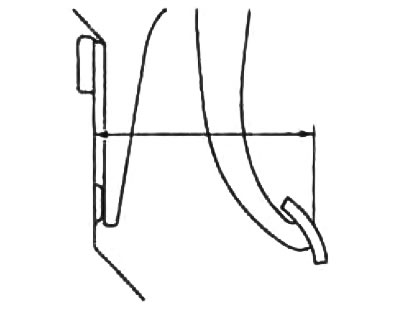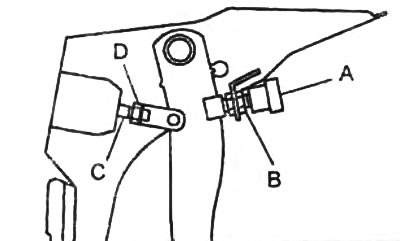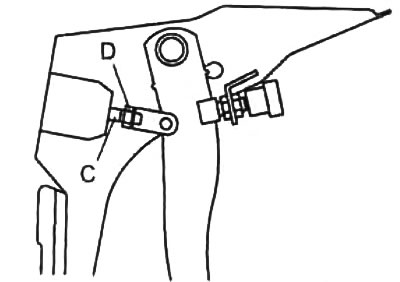Check that the distance between the top surface of the brake pedal pad and the bulkhead of the engine compartment is correct.
- Pedal height - 214 - 219 mm

2. Adjusting the height of the brake pedal.
A) Disconnect the brake light switch connector.
b) Loosen the locknut "IN" and turn off the switch "A" so that it does not touch the pedal.

V) Loosen the locknut "D" and by rotating the stem "WITH", adjust the brake pedal height.
G) holding rod "WITH" tighten the locknut "D".
- Tightening torque - 24 - 34 Nm
d) wrap the breaker "A" so that the gap between the switch rods and the stop corresponds to the norm.
- Gap - 0.1 - 1.0 mm
e) Tighten locknut "IN".
- Tightening torque - 14 - 18 Nm
and) Connect the brake light switch connector.
h) After adjustment, check the free play of the brake pedal and the correct operation of the brake lights.
3. Checking the free travel of the brake pedal.
A) To remove vacuum from the system, press the brake pedal several times.
b) Remove the cotter pin and pin, make sure the pedal and fork holes are aligned, and reinstall the cotter pin and pin.
V) Slowly depress the brake pedal until you feel resistance, measure the pedal free play.
- Pedal free play - 3 - 8 mm

Make adjustments if necessary.
4. Adjusting the free play of the brake pedal.
A) Remove the cotter pin and fork pin.
b) Loosen the locknut "D" and by rotating the stem "WITH", line up the holes in the pedal and stem yoke.

V) Install nt place fork pin and cotter pin.
G) Tighten locknut "D".
- Tightening torque - 24 - 34 Nm
d) Check pedal height and brake lights for proper operation.
5. Checking the brake pedal reserve.
Start the engine and depress the brake pedal with a force of 589 N. Make sure that the distance between the upper surface of the pedal pad and the floor covering is correct.
- Power reserve - not less than 105 mm

If the distance is less than normal, check:
- lack of air in the brake system;
- serviceability of the automatic regulator;
- there is no excessive clearance between the pads and the brake disc/drum.
